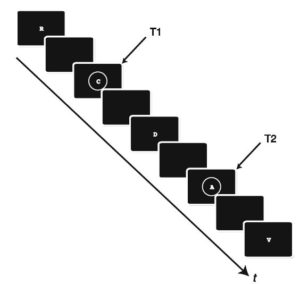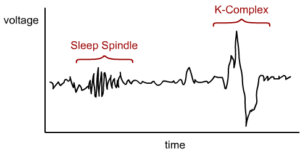Why do we sleep? Apparently, this simple question has no simple answer, despite decades of research. According to leading sleep researcher William Dement, “the only reason we need to sleep that is really, really solid is because we get sleepy.”
But just because we may not know why we need to sleep doesn’t prevent us from knowing many other things about sleep. For example, much is known about the relationship between sleep and cognitive performance.
In a classic study from the 1920s, Jenkins and Dallenbach showed that when time between study and test (the so-called retention interval) is held constant, more forgetting is observed when participants were awake, rather than asleep, during the retention interval. (Being at the leading edge of 1920’s science, Jenkins and Dallenbach did not use the rather pedestrian word “forgetting” to describe their data; they instead referred to the rather more sophisticated “obliviscence.” I had to look that up.)
This classic study was soon joined by many others that showed the benefits of sleep on cognitive performance and, conversely, the disruptive effects on performance of withholding sleep. The latter was illustrated particularly well in a study by Turner and colleagues, who showed that sleep deprivation dramatically reduced the working memory capacity of participants by 38% in comparison to a control group that was allowed to sleep.
A recent article in the Psychonomic Society’s journal Attention, Perception, & Psychophysics added to this growing knowledge base about the beneficial effects of sleep on cognitive performance. Researchers Nicola Cellini and colleagues examined an intriguing phenomenon known as the attentional blink.
The figure below shows the typical procedure that elicits an attentional blink. Participants are exposed to single letters that are presented consecutively and extremely rapidly in a single location on the screen.

Presentation durations are very brief, in the order of 34 ms (that’s 1/30th of a second), with an equally brief interval between each letter. Thus, the entire sequence in the above figure would take on the order of 1/3 of a second to be presented.
The participants’ task is to report the letters that are cued by a surrounding circle after the sequence has come to completion. So, for the above figure, participants would type “C” (T1) and “A” (T2) on the keyboard to report the two targets.
The attentional blink refers to the finding that if T2 follows T1 in close temporal proximity, reporting of that second target is significantly impaired. We know that this represents an attentional rather than low-level perceptual phenomenon because if T2 immediately follows T1, it is reported perfectly well. Because of this sparing of T2 when it immediately follows T1, the attentional blink cannot reflect a perceptual problem, such as the visual system being overwhelmed by too much or too rapidly-presented information. If visual overload were the problem, then T2 should be overwhelmed by T1 when it follows in particularly close succession.
So what does the attentional blink have to do with sleep?
As it turns out, quite a lot.
Cellini and colleagues repeatedly presented participants with the attentional-blink task shown above, but they put participants into two separate groups: In the napgroup, people napped for 90 minutes in the afternoon before performing the task another time. In the wake group, people stayed awake and either continued their normal daytime activities or rested without falling asleep.
The main results of the study are shown in the figure below, which shows performance on T2 (the critical second target that might be missed due to the attentional blink) for the nap group and participants who did not sleep in between sessions. (The figure only shows part of the data but that suffices for present purposes.)
It is obvious that sleep benefited performance: A nap raised the likelihood of detecting T2 in a subsequent session considerably, whereas a similar benefit was absent for the people who stayed awake. The latter result rules out the possibility that the boost from the nap simply reflected a generalized practice effect.
In a further analysis, Cellini and colleagues pinned down the effect to specific aspects of sleep. It turned out that the performance improvement for T2 was associated with number of N2 sleep spindles. Those spindles are called spindles because, well, they look like spindles in an EEG, as shown in the Wikipedia figure below:

N2 spindles have previously been associated with improvements in memory during sleep, and also with the integration of newly learned information with existing knowledge. The results of Cellini and colleagues add the novel finding that sleep—and in particular N2 spindles—also benefits attentional selection in time: Participants in their experiment who exhibited a greater number of spindles during their nap showed a greater improvement in T2 detection performance after their nap.
So why would the number of spindles be so important?
Cellini and colleagues offer some intriguing suggestions based on prior neuroscientific findings that have linked synchronization between left frontal and right parietal areas in the cortex with the absence of an attentional blink. Likewise, it has been shown that N2 sleep (during which the spindles occur) permits the brain interactions that are needed for synchronizing local and global network activity. In a nutshell, sleep may permit the synchronization of different areas of our brains that we need to raise our attentional performance.
Maybe that is why Thomas Edison, among other notables, was big on naps and claimed to derive much of his energy from them.

2 Comments